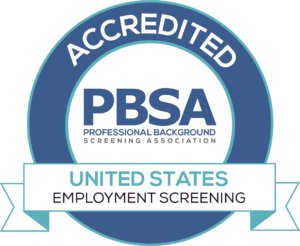Drugs and alcohol permeate workplace environments more than we would like to think. A national survey on drug use and health published in 2015 provides some interesting insights on the relationship between drug/alcohol abuse, and employment.
General Data
The Substance Abuse and Mental Health Services Administration (SAMHSA) estimates that around 8.7 percent of full-time workers (aged 18-64) used alcohol heavily within the past 30 days. In addition, it’s estimated that about 8.6 percent used illicit drugs within the month, while 9.5 percent were dependent on or abused either alcohol or illicit drugs in the past year.
While these figures may seem relatively harmless at first glance, we must realize that we are talking about nearly 10 percent of the nation’s workforce.
Let’s Break It Down by Industry
Predictably, worker drug and alcohol abuse vary significantly across industry groupings. That said, some of the largest industries have the largest problems. Below is data expressing drug and alcohol abuse, by percentage, across common industries. While this SAMHSA data was collected and combined from 2008-2012, we can reasonably assume the landscape has remained similar.
Past Month Heavy Alcohol Use by Full-Time Employees by Industry (Percentage)
- Mining: 17.5
- Construction: 16.5
- Accommodations and food service: 11.8
- Arts, entertainment and recreation: 11.5
- Utilities: 10.3
- Wholesale trade: 10.2
- Manufacturing: 9.7
- Retail trade: 9.0
- Transportation and warehousing: 8.8
- Professional, scientific, and technical services: 7.7
- Finance and Insurance: 7.4
- Educational Services: 4.7
- Health care and social assistance: 4.4
Past Month Illicit Drug Use by Full Time Employees by Industry (Percentage)
- Mining: 5.0
- Construction: 11.6
- Accommodations and food service: 19.1
- Arts, entertainment and recreation: 13.7
- Utilities: 6.1
- Wholesale trade: 7.8
- Manufacturing: 7.4
- Retail trade: 10.3
- Transportation and warehousing: 5.9
- Professional, scientific, and technical services: 9.0
- Finance and Insurance: 6.5
- Educational Services: 4.8
- Health care and social assistance: 5.5
Some Surprising Standouts
While heavy drug and alcohol use percentages as high nearing 20 percent are immediate causes for concern, so are figures nearing and exceeding 5 percent when talking about education and health care. Needless to say, these categories include the educators of children, school administrators, and folks who handle our money. To say about 1 in 20 of them is essentially toeing the line between retaining and losing control of their drug and alcohol habits is concerning.
What Can Be Done?
Unfortunately, it is remarkably difficult to control widespread drug and alcohol abuse. The problem continues to grow larger, year over year. However, there are measures employers can take to better secure their workplace, keeping their internal figures closer to 0 percent. Here are some of the basics:
1. Create Policies and Set Expectations
Surprisingly, many employees don’t feel that drug and alcohol abuse is a discouraged practice by their employer. If such disapproval is not expressed and reinforced through formal policies, a harmful culture could develop.
2. Monitor Performance
One of the first signs of drug and alcohol abuse in the workplace is decreased performance. While every worker’s performance will ebb and flow to some degree, drastic downturns for prolonged periods of time usually indicate a larger issue. In order to catch these trends, employers must have a way of collecting reliable performance data over the long term.
3. Implement a Drug Testing Program
One of the most effective methods used to combat employee drug and alcohol abuse is the implementation of pre-employment, random, and reasonable suspicion drug testing programs. Such programs not only work towards setting expectations with all employees but can catch problems before they get out of hand.
4. Be Consistent
When it comes to the three steps above, consistency is key. A good policy, practice, or program needs to be seen through for the desired outcomes to manifest. Occasional reevaluations and changes will inevitably be made with time, but a suitable foundation should always remain intact.
Conclusion
While drug and alcohol abuse in the workplace may be a national issue, employers have a large degree of control within their organizations. Taking the proper precautions can save you from workplace misconduct, accidents, lawsuits, undue costs, and much more. A little effort can go a long way.
For more information, pay us a visit online.










